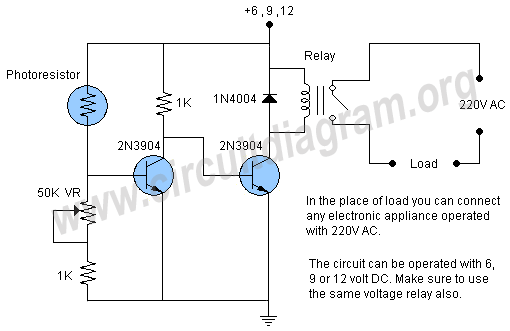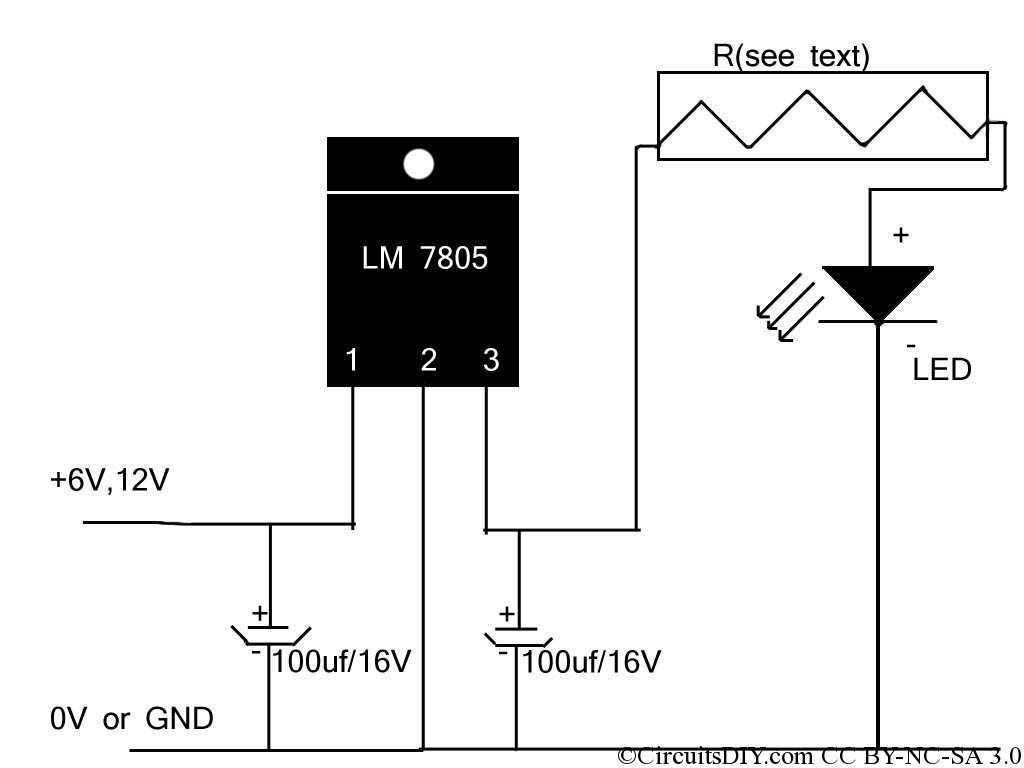
LED Light Flasher Project

This simple LED light flasher project utilizes a Hex Inverter 74C04 integrated circuit (IC) to generate a square wave pulse, which is employed to alternately turn two LEDs on and off.
The circuit design comprises a 74C04 Hex Inverter IC, which contains six independent inverters. In this application, only one of the inverters is used to create an oscillating signal. The output of the inverter toggles between high and low states, producing a square wave with a specific frequency determined by external components.
To establish the oscillation frequency, a resistor-capacitor (RC) timing circuit is connected to the inverter. The resistor (R) and capacitor (C) values can be adjusted to change the frequency of the output square wave. Typically, a higher resistance or capacitance will result in a slower flashing rate, while lower values will cause the LEDs to flash more rapidly.
The output from the inverter is connected to the anodes of the two LEDs, while their cathodes are connected to ground. The alternating high and low output from the inverter causes one LED to turn on while the other turns off, and vice versa, creating a flashing effect. Current-limiting resistors should be included in series with the LEDs to prevent excessive current from damaging them.
Powering the circuit requires a suitable DC voltage source, typically in the range of 5V to 15V, depending on the specifications of the 74C04 IC and the LEDs used. The circuit can be built on a breadboard for prototyping or designed onto a printed circuit board (PCB) for more permanent applications.
This LED flasher project serves as an excellent introduction to basic electronics concepts, including the use of logic ICs, timing circuits, and LED operation. It can be further expanded by incorporating additional features, such as variable flashing rates or the use of multiple LEDs in different configurations.This simple LED Light flasher project uses a Hex Inverter 74C04 IC to generate a square wave pulse which is used to alternately ON and OFF two LEDs 🔗 External reference
The circuit design comprises a 74C04 Hex Inverter IC, which contains six independent inverters. In this application, only one of the inverters is used to create an oscillating signal. The output of the inverter toggles between high and low states, producing a square wave with a specific frequency determined by external components.
To establish the oscillation frequency, a resistor-capacitor (RC) timing circuit is connected to the inverter. The resistor (R) and capacitor (C) values can be adjusted to change the frequency of the output square wave. Typically, a higher resistance or capacitance will result in a slower flashing rate, while lower values will cause the LEDs to flash more rapidly.
The output from the inverter is connected to the anodes of the two LEDs, while their cathodes are connected to ground. The alternating high and low output from the inverter causes one LED to turn on while the other turns off, and vice versa, creating a flashing effect. Current-limiting resistors should be included in series with the LEDs to prevent excessive current from damaging them.
Powering the circuit requires a suitable DC voltage source, typically in the range of 5V to 15V, depending on the specifications of the 74C04 IC and the LEDs used. The circuit can be built on a breadboard for prototyping or designed onto a printed circuit board (PCB) for more permanent applications.
This LED flasher project serves as an excellent introduction to basic electronics concepts, including the use of logic ICs, timing circuits, and LED operation. It can be further expanded by incorporating additional features, such as variable flashing rates or the use of multiple LEDs in different configurations.This simple LED Light flasher project uses a Hex Inverter 74C04 IC to generate a square wave pulse which is used to alternately ON and OFF two LEDs 🔗 External reference





